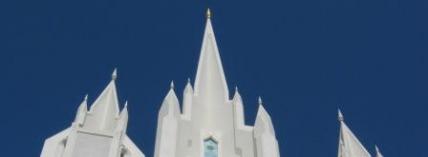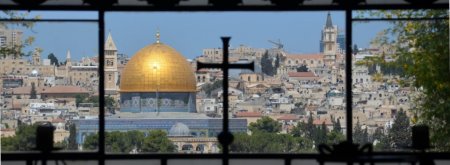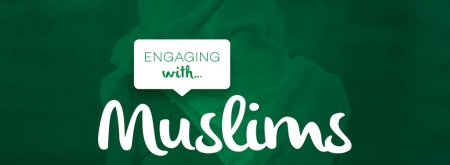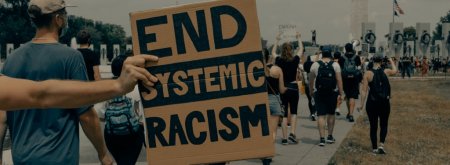What to say to Mormons
In the last chapter we saw that the Bible is reliable, being textually pure and verifiably accurate in many places. Therefore, the Mormon can have confidence that the Bible is the word of God and that it can be accurately translated. In this chapter we will examine the Book of Mormon to see how it holds up to the historical test. The Mormons at your door will tell you that many findings within archaeology have confirmed the Book of Mormon time and time again. Is this true? What does the historical data we have tell us about the events recorded in the Book of Mormon?
1. There is no specific confirmation of the Book of Mormon from archaeology.
A. What Mormon archaeologists say
Brigham Young University (BYU) is owned by the Mormon Church and has a department of professional archaeologists who are dedicated to archaeology as it pertains to the Book of Mormon. These professionals, who are practicing Mormons, are to be applauded for their honesty. What many of them have to say will be a shock to the lay Mormon who is unaware that archaeology and the Book of Mormon are at odds with one another. The lay Mormon is told by the Mormon Church that archaeology continues to confirm the Book of Mormon, while Mormon scholars who actually study archaeology for a living have something quite different to say.
[It appears that the Book of Mormon] had no place in the New World whatsoever ... [It] just doesn’t seem to fit anything ... in anthropology [or] history.... It seems misplaced.[20]
The first myth that we need to eliminate is that Book of Mormon archaeology exists. Titles on books full of archaeological half-truths, dilettante on the peripheries of American archaeology calling themselves Book of Mormon archaeologists regardless of their education, and a Department of Archaeology at BYU devoted to the production of Book of Mormon archaeologists do not insure that Book of Mormon archaeology really exists.[21]
What I would say to you is there is no archaeological proof of the Book of Mormon. You can look all you want. And there’s been a lot of speculation about it. There’ve been books written by Mormon scholars saying that “this event took place here” or “this event took place here.” But that’s entirely speculative. There is absolutely no archaeological evidence that you can tie directly to events that took place.[22]
Now, I’m an archaeologist, and I work in Mexico where some people think that the events occurred. So a lot of Mormons ask me every week if I find any evidence. And I tell them, “No.” ... (T)he question of how to translate what the Book says in terms of real evidence that we can grab in our hands, archaeologically, is still a huge problem.[23]
Keep in mind that all of these are practicing Mormons who are professional Book of Mormon archaeologists!
B. What non-Mormon archaeologists say
Earlier we read from the Smithsonian Institution’s statement “The Bible as History.” We saw that archaeology confirms much of the Bible and that professional archaeologists use the Bible in their work. The Smithsonian also has a “STATEMENT REGARDING THE BOOK OF MORMON.” This statement can be requested at the same address. Every one of the statements are damaging to the reliability of the Book of Mormon. Here is the first of eight statements:
The Smithsonian Institution has never used the Book of Mormon in any way as a scientific guide. Smithsonian archaeologists see no direct connection between the archaeology of the New World and the subject matter of the book.
In 1989, Michael Ammons wrote to the National Geographic Society requesting information on the Book of Mormon and archaeology. The Society replied in a letter dated April 26, 1989:
... neither the Society nor any other institution of equal prestige has ever used the Book of Mormon in locating archaeological sites. Although many Mormon sources claim that the Book of Mormon has been substantiated by archaeological findings, this claim has not been verified scientifically.
Also in 1989, Linda Hansen wrote to the Department of Archaeology at Boston University with a similar request. In a reply letter dated April 5, 1989, Julie Hansen of the Department responded:
The Archaeological Institute of America has never used the Book of Mormon as a scientific guide in locating historic ruins on the Western Hemisphere ... Over the past 30 years The New World Archaeological Foundation, located at Brigham Young University in Provo, Utah, has conducted numerous scientific excavations in Mesoamerica, originally with a view to confirming the claims in the Book of Mormon. They have discovered no evidence that supports the Book of Mormon in any way. Nonetheless, they have published in full detail the results of their excavations in Papers of the New World Archaeological Foundation volumes 1-55, 1959 and following.... They are accepted by the Archaeological Institute of America and the Society of American Archaeologists as legitimate scientific investigations and the New World Archaeological Foundation is to be commended for publishing the results of their work that essentially refutes the basic beliefs of the Mormon Church on which the Foundation is based.[24]
Therefore, there is a consensus from professional archaeologists, Mormon and non-Mormon alike, that there is no specific confirmation of the Book of Mormon from archaeology.
2. The lack of archaeological evidence is sometimes damaging
A) The Book of Mormon claims that the ancient inhabitants spoke and wrote in “Reformed Egyptian” and Hebrew.[25] If this were the case, we would expect to find artifacts with writings in these languages. However, the Smithsonian’s eighth statement regarding the Book of Mormon says:
Reports of findings of ancient Egyptian, Hebrew, and other Old World writings in the New World in pre-Columbian contexts have frequently appeared in newspapers, magazines, and sensational books. None of these claims has stood up to examination by reputable scholars. No inscriptions using Old World forms of writing have been shown to have occurred in any part of the Americas before 1492 except for a few Norse rune stones which have been found in Greenland.
B) The Book of Mormon states that the two peoples mentioned (Nephites and Lamanites) had Jewish beliefs that became Christian when the resurrected Christ appeared to them. However, there is no evidence that the ancient inhabitants in the Americas had either Jewish or Christian beliefs.
C) Hill Cumorah is located in New York, southeast of Rochester. Joseph Smith claimed that when Moroni appeared to him, he was told that Moroni’s father, Mormon, buried the gold plates upon which the Book of Mormon was based on the hill Cumorah just before the great final battle there (Mormon 6:6). In the Pearl of Great Price, Smith writes that the day after his second vision, he went to a large hill outside of the village where his family lived (the hill Cumorah) and found the gold plates.[26] This identifies the hill where Smith dug up the plates as the same hill where Mormon buried them and where the great battle took place. In Mormon 6:10-15, it is claimed that hundreds of thousands of people were killed on or near the hill Cumorah during that final battle. It says that “their flesh, and bones, and blood lay upon the face of the earth, being left by the hands of those who slew them to molder upon the land, and to crumble and to return to their mother earth” (Mormon 6:15). In other words, their bodies were left there, unburied.
To help you understand the magnitude of casualties at hill Cumorah, let’s consider another major battle. During the Battle of Gettysburg of the American Civil War there were 55,000 soldiers wounded, 6,000 of them killed on the battlefield and 4,000 more whose wounds were mortal. Eyewitnesses said that there was so much blood from the dead and injured that there were parts of the battlefield that seemed like streams of blood. So many men and horses died that all could not be buried at once and many corpses were left on the battlefield until a few days later when others were hired to do the task.
If 6,000 men died on the battlefield at Gettysburg, what would a battlefield look like with hundreds of thousands dead? Since they were left unburied at hill Cumorah, wouldn’t there be some artifacts made of metal and stone? Bullets by the thousands are found at Gettysburg. Nothing however has been found at hill Cumorah.
University of Rochester paleontologist and stratigrapher Carl Brett has worked in the Palmyra, New York area where hill Cumorah is located and is familiar with the hill and its geologic conditions. He says that if hundreds of thousands were slaughtered at the hill and not buried, there would still be skeletal remains on the surface today, even after 1,600 years. Scavengers and weather conditions would account for why much is gone, but there would still be quite enough left to look at. Metallic artifacts from weapons and armor would also be easily found.[27] But nothing has ever been found at hill Cumorah.
3. Attempts by Mormons to answer the archaeological problem fail
During a series of conversations I once had with a Mormon friend and some Mormon missionaries, I turned to them on the first meeting and said that one objection I had to Mormonism was that there is no archaeological evidence to support the stories in the Book of Mormon. One of the missionaries smiled confidently and claimed there was a lot of evidence from archaeology to support the historical truthfulness of the Book of Mormon. I asked him to show me some. He said he did not have any information with him, but would bring some to our next meeting. He did. Needless to say he was shocked when I quoted the Mormon scholars below who refuted the very materials he had in hand!
Few of the writings they have produced are of genuine consequence in archaeological terms. Some are clearly on the oddball fringe; others have credible qualifications. Two of the most prolific are Professor Hugh Nibley and Milton R. Hunter; however, they are not qualified to handle the archaeological materials their works often involve.[28]
Those volumes which most flagrantly ignore time and space and most radically distort, misinterpret, or ignore portions of the archaeological evidence are the popular Farnsworth volumes. Also inadequate, from a professional archaeologist’s point of view, are the well intentioned volumes by Milton R. Hunter and a number of smaller pamphlets and works by various authors.... New World-Old World comparisons have been less popular but fraught with problems. The best known examples are the two volumes by Nibley which suffer from an overdose of ‘Old Worlditis’.... He does not know New World culture history well, and his writing ignores the considerable indigenous elements in favor of exclusively Old World patterns.[29]
In situations where sources of religious and secular authority conflict with each other, a Latter-day Saint sometimes finds himself in a quandary. He has been assured by a folklore transmitted in lessons, talks and church literature that archaeologists (usually Gentiles) are steadily proving the Book of Mormon authentic, while through his formal education and secular literature he has become aware that in actuality ‘the experts’ seem to contradict the scripture.[30]
Science does not arrive at its conclusions by syllogism, and no people on earth deplore proof demonstration by syllogism more loudly than real archaeologists do. Yet, Mr. Jakeman’s study is nothing but an elaborate syllogistic stew. The only clear and positive thing about the whole study is the objective the author is determined to reach.[31]
Again, everyone of the above are practicing Mormons. Furthermore, as mentioned earlier, BYU is owned by the Mormon Church and has a Department dedicated to Book of Mormon archaeology. According to BYU anthropologist John Clark, virtually all of the professional archaeologists there admit that archaeological finds which specifically tie the past to events in the Book of Mormon are missing. These practicing Mormons call books, and their authors, that list sensational findings not qualified, inadequate, and speculative.
Some Mormons will respond that these archaeologists do not represent the official Church position, so their opinions are not credible. But why trivialize and dismiss the findings of the overwhelming consensus of practicing Mormons who are professional archaeologists, yet accept, without question, the official Mormon Church position? Could it be that the ground’s silence is indicative of a Mormon Church position that is false? After all, if it is false, silence from archaeology is precisely what we might expect to find.
It is fair to mention that professional Mormon archaeologists claim there is general confirmation of the Book of Mormon from archaeology, citing peoples existing where it is thought Book of Mormon peoples may have existed. This general confirmation, however, does not show that the Mormon picture of history is true. These same archaeologists (Johnson, Clark) admit that conclusions regarding the findings are pure speculation. The issue is not, “Did people exist in the Americas between 600 B.C. through A.D. 400?” We know that they did. The issue is, “Can we identify these civilizations as the ones mentioned in the Book of Mormon?” And the answer from virtually all professional Mormon and non-Mormon archaeologists alike is “No.”
In the last chapter we saw that the Hebrew and Greek manuscripts in our possession today allow us to have an accurate translation of the Bible. Therefore, even by Mormon standards, we can be confident that we have the Word of God. We also saw that secular history has attested to the accuracy of the Bible so that we can know with certainty that many of the events recorded in it took place. Unfortunately, the Mormon cannot have this same confidence when it comes to the Book of Mormon. Archaeology and secular history are silent when asked if the events took place. Not only is this silence disturbing to professional Mormon archaeologists, but it is evidence against Mormonism when no artifacts turn up in areas which should be abundant with relics such as the hill Cumorah. However, as damaging as these may be, Mormonism’s greatest challenge concerns another one of their scriptures, the Book of Abraham, which will be the subject of our next chapter.
Go to 4. The Book of Abraham
References
[20] Dr. Ray Metheny, Professor of Anthropology, BYU. Address at the Sixth Annual Sunstone Theological Symposium, Salt Lake City, 8/25/84.
[21] Dr. Dee Green, Former Editor of the University Archaeological Society Newsletter “Book of Mormon Archaeology: The Myths and the Alternatives,” in Dialogue: A Journal of Mormon Thought, 4, No.2 (Summer 1969), pp.77-78.
[22] Dr. David Johnson, Professor of Anthropology, BYU. In a personal telephone conversation, 7/23/97.
[23] Dr. John Clark, Professor of Anthropology, BYU. In a personal telephone conversation, 7/25/97.
[24] Copies of the reply letters from the National Geographic Society and Boston University were provided by Jim and Judy Robertson of Concerned Christians.
[25] Mosiah 1:4; Mormon 9:32-33; also see Joseph Smith, History 1:64.
[26] Joseph Smith, History, verses 51-52. Hill Cumorah is located in Manchester, New York, about 25 miles east of Rochester. Smith lived in Palmyra, about five miles away from the hill.
[27] A personal telephone conversation on September 8, 1997.
[28] John L. Sorenson, Assistant Professor of Anthropology & Sociology, BYU, Dialogue: A Journal of Mormon Thought, 1, No.1 (Spring 1966), pp.145-246.
[29] Dee Green, General Officer, Univ. Archaeological Society, Dialogue: A Journal of Mormon Thought, 4, No.2 (Summer 1969), p.74.
[30] John L. Sorenson, Dialogue: A Journal of Mormon Thought, 4, No.2 (Summer 1969), p.81.
[31] Dr. Hugh Nibley, quoted by Dee Green, Book of Mormon Archaeology, p.75.
© 1998 Mike Licona
This article is reproduced from Mike Licona's book Behold, I Stand at the Door and Knock: What to say to Mormons and Jehovah’s Witnesses when they knock on your door. It is reproduced here by the kind permission of the author.



